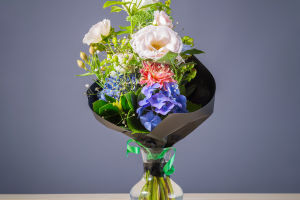Lipstick is a cosmetic primarily used on the lips to enhance their color or alter their appearance. It's an essential part of makeup routines worldwide.
The main components of lipstick include wax, oils, emollients, and pigments. Additionally, fragrances, antioxidants, and preservatives are often used in the manufacturing process. Let's delve into the roles of these components:
1. Wax: Wax is the primary component of lipstick, providing its structure. Commonly used waxes include beeswax, candelilla wax, and carnauba wax. Beeswax and candelilla wax often constitute the majority of the wax content in lipstick, while other waxes like carnauba wax add strength and stability.
2. Oils and Fats: Oils and fats help keep the wax soft enough for easy application while working with the wax to prevent melting. Various types of oils are used, including mineral oil, petrolatum, vegetable oils, and lanolin. Some lipsticks focus on plant-based oils such as olive oil, castor oil, sunflower seed oil, and jojoba oil, offering a healthier option. The right balance of oils and fats must be achieved in the formula.
3. Emollients: Another crucial component affecting lipstick is emollients, providing moisturizing and soothing properties. Some lipsticks can leave lips dry, especially those with fewer oils in the formula, such as matte lipsticks. Emollients help maintain lip hydration, improving the lipstick's performance on the lips. Cocoa butter, shea butter, vitamin E, and aloe vera are commonly used emollients.
4. Pigments: While we care about the ingredients that make up lipstick, we're more concerned about its appearance; this is where pigments come into play. Pigments impart color to the lipstick. They can be natural, derived from mineral or plant sources, or they can be synthetic.
5. Fragrances and Flavorings: Fragrances in lipstick serve to provide a pleasant scent. They can be natural, such as plant extracts or essential oils, or synthetic, such as flavorings. The choice of fragrance often depends on the lipstick's positioning and target audience: some lipsticks may add floral or fruity scents, while others may opt for a subtle aroma.
6. Antioxidants: Adding antioxidants to lipstick helps extend its shelf life and protects it from environmental factors. Common antioxidants include vitamin E, vitamin C, and tea extracts. They help maintain the stability of the lipstick, preventing it from spoiling or developing odors during use.
7. Preservatives: Preservatives are essential ingredients to ensure lipstick remains fresh throughout its shelf life. They prevent the growth of bacteria and mold, prolonging the lipstick's shelf life and ensuring user safety. Common preservatives include benzoic acid esters, parabens, and others.
8. Shine Enhancers: For those who desire a glossy finish, shine enhancers are indispensable. These ingredients give lipstick a shiny and shimmering appearance, making lips look fuller and more enticing. Shine enhancers are typically special particles or additives, such as glitter or pearl powder, which scatter light and create a sparkling effect.
In the manufacturing process of lipstick, each ingredient plays an indispensable role, collectively creating captivating colors and dazzling effects.


